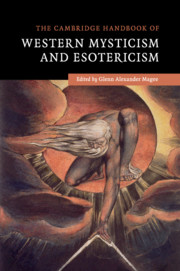Book contents
- Frontmatter
- Dedication
- Contents
- Acknowledgments
- Editor's Introduction
- List of contributors
- I ANTIQUITY
- 1 Ancient Mysteries
- 2 Pythagoras and Pythagoreanism
- 3 Parmenides and Empedocles
- 4 Plato, Plotinus, and Neoplatonism
- 5 Hermetism and Gnosticism
- 6 Early Jewish Mysticism
- 7 Early Christian Mysticism
- II THE MIDDLE AGES
- III THE RENAISSANCE AND EARLY MODERNITY
- IV THE NINETEENTH CENTURY AND BEYOND
- V COMMON THREADS
- Suggestions for Further Reading
- Index
- References
6 - Early Jewish Mysticism
from I - ANTIQUITY
Published online by Cambridge University Press: 05 May 2016
- Frontmatter
- Dedication
- Contents
- Acknowledgments
- Editor's Introduction
- List of contributors
- I ANTIQUITY
- 1 Ancient Mysteries
- 2 Pythagoras and Pythagoreanism
- 3 Parmenides and Empedocles
- 4 Plato, Plotinus, and Neoplatonism
- 5 Hermetism and Gnosticism
- 6 Early Jewish Mysticism
- 7 Early Christian Mysticism
- II THE MIDDLE AGES
- III THE RENAISSANCE AND EARLY MODERNITY
- IV THE NINETEENTH CENTURY AND BEYOND
- V COMMON THREADS
- Suggestions for Further Reading
- Index
- References
Summary
Introduction
In recent decades, attention has increasingly been paid to the shifting and multifaceted meanings of the “mystical” in a variety of cultural, historical, and linguistic contexts and discourses. As a result, scholars largely agree that the term “mysticism” can neither be uncritically imposed on ancient texts nor commonly utilized to connote a single, universal, timeless phenomenon. With this in mind, this essay adopts a contextualized perspective and aims to elucidate the manner in which distinct notions, embedded in early Jewish sources, can be categorized as “mystical.” I discuss this topic with a focus on one heuristic model: the Merkavah mysticism of the Hekhalot literature.
Merkavah Mysticism of the Hekhalot Literature
Merkavah mysticism developed out of exegesis of, speculations on, and expansion of the vision of God's celestial chariot-throne (the Merkavah/מרכבה) in Ezekiel 1, 10, as well as Daniel 7. Variants are found in diverse early Jewish sources, such as Qumranic texts, earlier apocalyptic and gnostic sources, the Talmud, and other rabbinic writings. The Hekhalot corpus includes its first developed expression. This literature derives its name from the Hebrew word for palaces or temples (Hekhalot/היכלות). This name corresponds with one of its key themes: the ascent of humans through divine celestial palaces or temples, and their visions of God and his chariot-throne.
The Hekhalot corpus is distinctively multifaceted, composed of several pseudepigraphic compositions written primarily in Hebrew and Aramaic, and attributed to early rabbis of the second century CE. The precise historical date, provenance, social context, textual boundaries, and transmission of these compositions are ambiguous. The literature contains traditions from the Second Temple period and has strong connections with Qumranic, apocalyptic, rabbinic, and gnostic sources. However, it evolved through a long process of writing, editing, and redacting and is commonly assumed to have been formed in Babylonia and Palestine between the fourth and ninth centuries CE, perhaps even later. Despite its collective title, the Hekhalot literature is fluid and diverse, including a variety of texts, themes, practices, topics, and literary genres.
A Paradigmatic Model
For a number of interrelated reasons, this remarkable cluster of writings serves as a highly suitable paradigm for the present investigation of early Jewish mysticism.
- Type
- Chapter
- Information
- Publisher: Cambridge University PressPrint publication year: 2016



